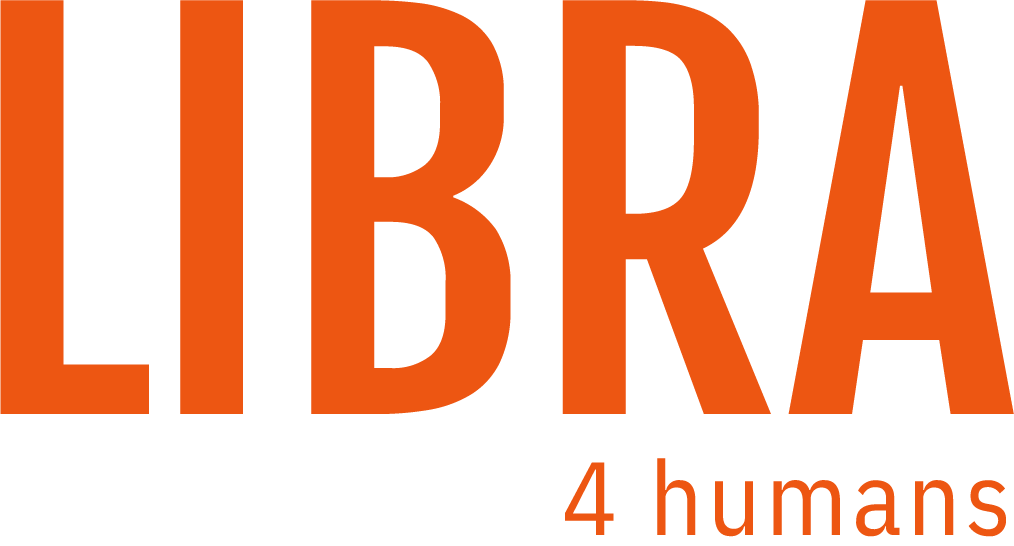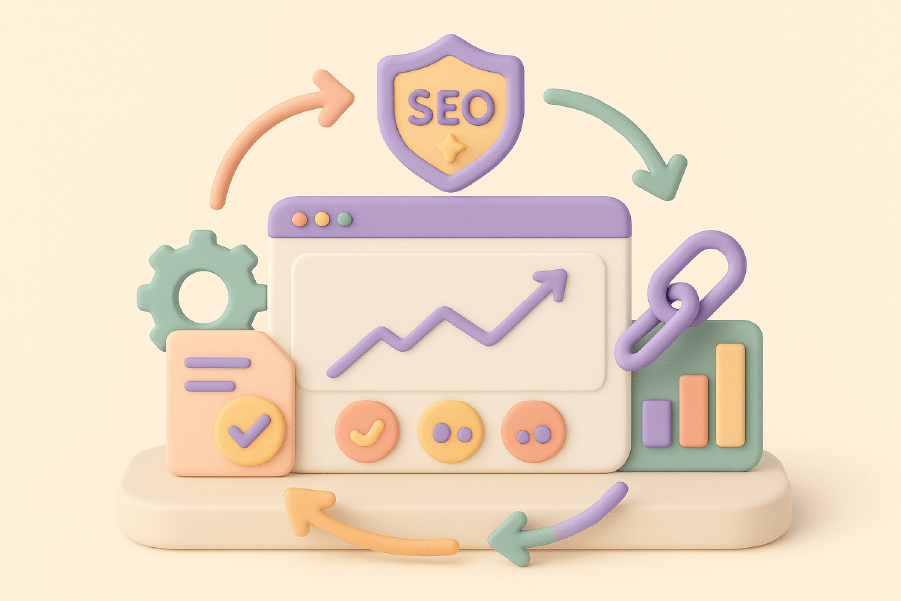Looking to grow your business online? Strategic digital marketing is the key. It involves a plan that aligns your marketing efforts with your business goals. In this article, you’ll discover the core strategies to make your digital marketing more effective. Effective web design plays a crucial role in these strategies by optimizing user experience, which directly influences user engagement and conversion rates.
Key Takeaways

Strategic digital marketing focuses on long-term objectives by aligning marketing efforts with business goals, leveraging data-driven insights, and integrating various tactics like SEO and social media.

Personalization and automation enhance digital marketing effectiveness, improving customer engagement and satisfaction while driving higher ROI through targeted communication and streamlined processes.

Implementing sustainable practices and social responsibility in digital marketing can strengthen brand perception and consumer loyalty, as businesses increasingly align with values-driven initiatives. Additionally, brands need to stand out in the competitive market through strategic marketing tactics, such as collaborations with influencers, to attract consumers loyal to established protein brands.
Understanding Strategic Digital Marketing

Strategic digital marketing is not just about implementing individual tactics but about creating a cohesive plan that aligns with broader business goals. This approach empowers businesses to achieve growth by aligning marketing efforts with data-driven insights, emerging technologies, and audience needs.
Staying ahead of trends and adopting innovative strategies allows businesses to gain a competitive edge in the ever-evolving digital landscape.
What is Strategic Digital Marketing?
At its core, strategic digital marketing emphasizes long-term objectives and a focused approach that aligns marketing efforts with broader business goals. Effective web design plays a crucial role in creating a cohesive digital marketing strategy that aligns with these business goals.
This involves using data-driven insights to create a consistent direction for online marketing activities, ensuring that every effort supports the overall strategy of the business. For example, a business might aim to increase online revenue by 20% and generate 50% more leads through targeted marketing campaigns.
A successful digital marketing strategy integrates various marketing tactics, such as SEO, content marketing, and social media, to achieve these goals. Aligning objectives, conducting a thorough marketplace analysis, and crafting a well-defined strategy ensures that marketing efforts are both effective and efficient.
Benefits of Strategic Digital Marketing
The benefits of a strategic approach to digital marketing are manifold. Aligning marketing strategies with business objectives leads to a better return on investment (ROI) and more efficient resource allocation. This precision allows businesses to target their audience more effectively, tailoring their marketing messages and offers to specific customer segments. For e-commerce brands, this can translate to enhanced customer retention and the building of a loyal customer base.
Moreover, an effective digital marketing strategy can significantly increase brand awareness and customer engagement across various digital channels. Leveraging SEO, content marketing, and social media helps businesses create a strong online presence that resonates with their target market and drives sustained growth.
Core Strategies for Strategic Digital Marketing

Implementing a strategic approach to digital marketing involves several core strategies that collectively enhance visibility, engagement, and overall performance.
These strategies include search engine optimization (SEO), content marketing, and social media marketing, each playing a crucial role in building a robust digital presence. Effective web design also plays a critical role in optimizing user experience and directly influences user engagement and conversion rates, making it an essential focus for businesses.
Search Engine Optimization (SEO)
SEO is a fundamental component of any successful digital marketing strategy. It aims to enhance site visibility by increasing organic, non-paid traffic through search engines. Targeting user intent and optimizing content for relevant keywords boosts search and organic traffic, ultimately driving more visitors to the website. This includes using various content types like blogs, videos, and webinars to enhance content marketing efforts. Effective web design not only optimizes user experience by improving site layout and functionality but also directly influences search engine rankings.
Sustained traffic growth and stronger brand authority are significant outcomes of integrating SEO with content marketing. Additionally, ensuring that content is optimized for mobile-first audiences is critical, given the increasing use of mobile devices. Focusing on these aspects helps businesses achieve higher rankings in search engine results and attract a broader audience.
Content Marketing
Content marketing focuses on creating and promoting valuable content to attract and engage target audiences. Providing information that is both interesting and useful helps businesses build brand awareness and foster trust among potential customers. Typically, viewers engage with three to five pieces of relevant content before reaching out to a sales representative, underscoring the importance of content in the buyer journey.
Authentic content encourages audience engagement and inspires others to create similar content, expanding the brand’s reach. Whether through blog articles, social media posts, or video marketing, content marketing remains a powerful tool for connecting with audiences and driving customer acquisition.
Social Media Marketing
Social media marketing entails the creation and sharing of content on various social media platforms. Its goal is to attract attention, drive traffic to websites, and generate leads. Platforms like TikTok, which is expected to be the fastest-growing social media platform in 2024, offer unique opportunities for brands to enhance visibility and engagement. For instance, Omsom effectively uses TikTok to share behind-the-scenes content and culturally relevant recipes, engaging audiences in meaningful ways.
Influencer marketing is another critical component of social media marketing, allowing brands to gain reach within targeted audiences and drive campaign performance. Collaborating with micro-influencers helps brands benefit from lower costs and stronger connections within engaged communities. To stand out in the competitive health and fitness market, brands need to leverage influencer collaborations and strategic marketing tactics to attract consumers loyal to established protein brands.
Building communities around the brand and engaging in active social listening further enhances audience engagement and brand loyalty.
Paid Advertising
Paid advertising is a powerful digital marketing strategy that involves purchasing ad space on various digital channels, such as search engines, social media platforms, and websites. The primary goal of paid advertising is to reach a specific audience and drive traffic to a website or landing page. There are several types of paid advertising, including pay-per-click (PPC) advertising, display advertising, and social media advertising.
PPC advertising, for example, allows businesses to bid on keywords and pay only when a user clicks on their ad. This method ensures that the advertising budget is spent on actual engagement rather than mere impressions. Display advertising, on the other hand, involves placing banner ads on relevant websites to increase brand visibility. Social media advertising leverages platforms like Facebook, Instagram, and LinkedIn to target specific demographics based on user data.
While paid advertising can be highly effective in reaching a large audience and driving conversions, it requires careful planning and execution. Businesses must define clear objectives, select the right digital channels, and continuously monitor and optimize their campaigns to ensure a positive return on investment (ROI). By doing so, they can maximize the effectiveness of their paid advertising efforts and achieve their marketing goals.
Personalization and Automation in Digital Marketing

Personalization and automation are key elements in modern digital marketing, offering ways to enhance customer experiences and optimize marketing efforts. Leveraging data and artificial intelligence allows businesses to create personalized experiences at scale, driving higher engagement and conversion rates.
Personalization Techniques
Personalization in digital marketing can significantly increase customer engagement by delivering relevant experiences. Techniques such as email segmentation based on customer activity allow for targeted communication, while dynamic content in emails can increase relevance by adjusting to the recipient’s preferences. For instance, Adidas drives engagement in its emails by making tailored product suggestions based on customer behavior.
Moreover, initiatives like Spotify Wrapped, which transforms user listening data into visually appealing summaries, create a FOMO event effect that encourages users to share their results, thereby increasing engagement and brand loyalty.
As artificial intelligence continues to evolve today, it will dominate predictive analytics, campaign optimization, and personalized user experiences in the coming years. To stand out in the competitive market, brands must leverage personalized marketing efforts that resonate with individual customer preferences.
Automation Tools
Marketing automation streamlines repetitive tasks, allowing marketers to focus on strategy and creativity. For example, chatbots can provide instant customer service, improving response times and customer satisfaction. Automated email sequences and dynamic ad targeting are other applications of marketing automation that enhance efficiency and effectiveness.
These tools not only save time but also ensure that marketing messages are delivered at optimal times, based on customer behavior and preferences. Integrating automation into digital marketing strategies helps businesses achieve higher ROI and better target their marketing efforts.
Data-Driven Decision Making
Data-driven decision-making is essential for optimizing marketing campaigns and ensuring alignment with business objectives. Using analytics tools to understand customer behavior and campaign performance allows businesses to make informed decisions, enhancing targeting and improving ROI.
Utilizing Analytics Tools
Tools like Google Analytics and Facebook Pixel are indispensable for tracking user behavior and campaign success. Accurate implementation of these tracking tools is crucial for capturing reliable data that can inform marketing decisions. Additionally, heatmaps can provide insights into user interactions on a website, helping identify optimization opportunities. Effective web design plays a critical role in capturing reliable data through optimized site layout and functionality.
Leveraging these analytics tools provides businesses with valuable insights into customer preferences and behaviors, enabling them to refine their marketing strategies for better performance and higher ROI.
Adjusting Strategies Based on Data
Analyzing data from marketing campaigns helps businesses identify gaps in the most successful content and refine their approaches accordingly. For instance, if expenditures on paid media are high but results are not meeting expectations, it may be necessary to adjust the strategy and focus on more effective platforms. Conducting audits of past campaigns can reveal insights that guide future marketing strategies.
A/B testing is another essential technique for evaluating the effectiveness of different marketing strategies. Monitoring relevant metrics and making data-driven adjustments ensures that marketing efforts are optimized for maximum impact and ROI.
Crafting the Brand Identity
Crafting a strong brand identity is a crucial step in developing a successful digital marketing strategy. A brand identity encompasses the unique personality and image of a business, setting it apart from competitors. To create a compelling brand identity, businesses need to define their core values, mission, and vision, as well as their unique selling proposition (USP).
A well-defined brand identity should be consistent across all digital channels, including the website, social media, and advertising. This consistency helps build trust and credibility with the target audience, making the brand more recognizable and memorable. For example, a company that values sustainability might emphasize eco-friendly practices in its messaging and visual elements across all platforms.
By crafting a cohesive brand identity, businesses can establish a strong online presence and foster a deeper connection with their audience. This connection not only enhances brand loyalty but also drives long-term growth and success in the digital landscape.
Defining Your Audience
Defining your audience is a critical step in creating an effective digital marketing strategy. A target audience is the group of people that a business aims to reach with its marketing efforts. To accurately define this audience, businesses need to gather data and insights about their customers, including demographics, interests, and behaviors.
Understanding the target audience allows businesses to create relevant content and advertising that resonates with them, ultimately driving conversions. For instance, a company targeting young professionals might focus on creating content that addresses career growth and work-life balance. Additionally, defining the audience helps businesses identify gaps in their marketing efforts, ensuring that their strategy is comprehensive and effective.
By knowing their audience, businesses can tailor their marketing messages to meet the specific needs and preferences of their customers. This targeted approach not only enhances engagement but also improves the overall effectiveness of the marketing strategy.
Sustainability and Social Responsibility

Incorporating sustainability and social responsibility into digital marketing strategies can enhance brand perception and foster consumer loyalty. By aligning marketing campaigns with values-driven initiatives, businesses can appeal to socially conscious consumers who prioritize environmental and social responsibility in 2025.
Eco-Friendly Practices
Eco-friendly practices are becoming increasingly significant as consumers prioritize brands that demonstrate environmental responsibility. For example, Adidas focuses on sustainable sourcing and energy-efficient production to minimize its environmental impact. Similarly, ASOS promotes sustainable fashion through curated product selections, showcasing their commitment to eco-friendly initiatives.
Transparent supply chains and ethical sourcing practices further enhance a brand’s credibility and appeal to socially conscious consumers, while also ensuring privacy. Highlighting these practices helps businesses build trust and loyalty among their audience.
Building Trust with Social Responsibility
Promoting social responsibility in marketing fosters trust and loyalty by demonstrating a brand’s commitment to ethical values. For instance, the Absolut campaign ‘Planet Earth’s Favorite Vodka’ involved eco-conscious advocates and LGBTQ influencers, highlighting the brand’s commitment to social values and progressive society.
Aligning business values with expectations for social responsibility is crucial for gaining consumer trust in 2025. Emphasizing sustainability and ethical practices helps businesses build strong relationships with their customers, ultimately driving long-term success.
Omnichannel Marketing for Consistent Customer Experiences

Omnichannel marketing is about delivering a seamless and consistent brand experience across multiple platforms. Integrating digital channels such as email, social media, and websites creates a cohesive experience that enhances customer engagement and builds brand loyalty.
This approach not only boosts brand recognition but also provides convenience for customers, allowing them to interact with the brand through their preferred options.
Integrating Email, Social Media, and Websites
To achieve a successful omnichannel strategy, it’s essential to ensure that messaging across different media channels remains consistent. This can be accomplished by reusing content between email and social media, significantly reducing production costs while maintaining uniformity. Creating a unified content calendar helps synchronize communication, ensuring timely updates and cohesive marketing messages across all channels.
Integrating email campaigns, social media, and websites provides seamless customer interactions, enhancing the overall customer experience. This coordinated effort ensures that customers receive a consistent brand message, regardless of the platform they use to engage with the brand. Additionally, effective web design plays a crucial role in creating a unified experience across email, social media, and websites, optimizing user engagement and conversion rates.
Enhancing Customer Engagement
Coordinated efforts across various platforms can significantly improve how customers interact and engage with a brand. Omnichannel marketing meets customers where they are, fostering improved engagement and retention by providing personalized experiences across multiple touchpoints.
Meeting customers where they are allows businesses to develop effective engagement strategies that resonate with their audience. This approach not only enhances customer satisfaction but also drives long-term loyalty and repeat business. If you want to visit your customers effectively, this strategy is essential.
Digital Marketing Campaigns
A digital marketing campaign is a series of coordinated marketing efforts designed to achieve a specific goal or objective. These campaigns can be used to launch a new product, promote a service, or build brand awareness. To create a successful digital marketing campaign, businesses need to define their goals and objectives, identify their target audience, and choose the most effective digital channels to reach them.
Digital marketing campaigns can include a variety of tactics, such as email marketing, social media marketing, and paid advertising. For example, an email marketing campaign might involve sending a series of targeted emails to nurture leads and drive sales. Social media marketing campaigns can leverage platforms like Instagram and Twitter to engage with followers and promote content. Paid advertising campaigns can use PPC or display ads to drive traffic to a landing page.
By carefully planning and executing these campaigns, businesses can achieve their marketing goals and drive significant results. The key is to have a clear understanding of the target audience and the digital channels they use, ensuring that the campaign is both effective and efficient.
Creating a Digital Marketing Campaign
Creating a digital marketing campaign involves several essential steps. First, businesses need to define the goals and objectives of the campaign, such as increasing website traffic, generating leads, or boosting sales. Next, they must identify their target audience by analyzing data and insights to understand their demographics, interests, and behaviors.
Once the target audience is defined, businesses can choose the most effective digital channels to reach them. This might include a mix of email marketing, social media, and paid advertising, depending on where the audience spends their time online. Creating relevant content and advertising that resonates with the target audience is crucial for driving engagement and conversions.
A well-planned strategy and a clear budget are also essential for ensuring the campaign’s effectiveness and efficiency. By following these steps, businesses can create successful digital marketing campaigns that achieve their goals and drive growth.
Examples of Successful Digital Marketing Strategies
Examining real-world examples of successful digital marketing strategies can provide valuable insights for businesses looking to enhance their own efforts. Brands like Nike and Spotify have effectively leveraged digital channels and a few types of strategies to build brand awareness and engage their audiences.
Nike – Apps, Games & the Metaverse
Nike’s marketing strategy includes leveraging digital apps, games, and the metaverse to enhance consumer engagement. The Nike Training Club app, for example, saw an 80% increase in sales in China during the latest quarter, demonstrating the effectiveness of its digital app strategy. Additionally, Nike’s acquisition of RTFKT reflects its commitment to entering the digital sneaker market, showcasing its innovative approach in the digital space.
By integrating the metaverse and digital apparel into its marketing strategy, Nike has reached new audiences and strengthened its brand presence. This innovative approach highlights the potential of digital channels to drive engagement and sales growth. Effective web design plays a crucial role in enhancing consumer engagement through these digital apps and platforms.
Spotify Wrapped – Turning Data into Engagement
Spotify Wrapped is a prime example of turning data into engagement. This year-end summary of most-listened songs and podcasts transforms user listening data into colorful visuals, creating a fun and shareable tool. The FOMO effect generated by Spotify Wrapped encourages users to share their results, fostering increased engagement and brand loyalty.
These engaging and shareable experiences not only drive customer engagement but also create a strong sense of community among users. Leveraging user data creatively, Spotify has built a successful digital marketing campaign that resonates with its audience.
Building Your Own Strategic Digital Marketing Plan
Creating a strategic digital marketing plan provides direction, ensuring that companies set clear goals and allocate resources effectively. Understanding your overall objectives and market allows you to craft a digital marketing strategy that aligns with your business goals and supports customer acquisition and retention.

Defining Objectives and Goals
Setting clear business objectives is essential for guiding digital marketing efforts. Marketing goals should be tied back to business objectives to ensure that all marketing activities contribute to overall business success. SMART goals, which are specific, measurable, achievable, relevant, and time-bound, are often used to define and measure goals effectively.
Strategizing marketing efforts and setting clear objectives allows businesses to create a roadmap for their digital marketing activities. This approach ensures that marketing initiatives are aligned with broader business goals, driving growth and achieving desired outcomes. It is crucial for a brand to stand out in the competitive market by having clear business objectives that guide its digital marketing efforts.
Conducting Audience Research
Understanding your target audience is crucial for an effective digital marketing strategy. Knowing where potential customers spend their time online helps define a target audience and tailor marketing messages accordingly. Creating buyer personas—representations of ideal customers based on audience research—provides valuable insights into customer preferences and behaviors.
Using real data and demographics to create these profiles prevents assumptions that can derail the marketing strategy. Analyzing what content the audience engages with helps businesses better understand their preferences and improve existing content to meet their audience’s needs.
Crafting a Detailed Content Plan
A detailed content plan is essential for informing, entertaining, and engaging the audience. This plan should outline the content needed to achieve marketing goals, including budget information and time estimates. Conducting a content audit helps identify what works and what doesn’t, providing insights for future planning. Effective web design plays a crucial role in creating engaging content that aligns with marketing goals.
Incorporating owned content that aligns with digital marketing strategy goals allows businesses to create a cohesive and effective content strategy. This approach ensures that all content efforts are directed towards achieving the desired outcomes, driving engagement and brand growth.
Summary
In summary, strategic digital marketing involves a comprehensive approach that aligns marketing efforts with broader business goals. By leveraging core strategies like SEO, content marketing, and social media marketing, businesses can enhance visibility, engagement, and overall performance.
As you embark on your digital marketing journey, remember to integrate personalization and automation, utilize data-driven decision-making, and align your marketing efforts with sustainability and social responsibility. By doing so, you’ll create a cohesive and engaging experience for your customers, driving growth and achieving long-term success. Start today and discover how these data-driven strategies can boost your business in 2025.
Frequently Asked Questions
What is strategic digital marketing?
Strategic digital marketing aligns marketing efforts with broader business goals, utilizing data-driven insights and emerging technologies to achieve sustainable long-term growth. This focused approach ensures that marketing initiatives effectively support overall business objectives. Additionally, effective web design plays a crucial role in enhancing user experience and aligning marketing efforts with business goals.
How can businesses benefit from strategic digital marketing?
Businesses can significantly enhance their return on investment and customer retention by aligning their digital marketing strategies with overall business objectives, leading to more efficient resource allocation and improved targeting.
What are some core strategies for effective digital marketing?
Effective digital marketing hinges on core strategies such as search engine optimization (SEO), content marketing, and social media marketing, which collectively enhance your online presence and foster engagement. Embracing these tactics can significantly improve your marketing outcomes. It is crucial to stand out in the competitive market through effective digital marketing tactics like SEO, content marketing, and social media marketing.
How do personalization and automation enhance digital marketing efforts?
Personalization and automation enhance digital marketing by boosting engagement through tailored experiences and reducing repetitive tasks, enabling marketers to concentrate on strategic and creative initiatives. This ultimately leads to more effective campaigns and better customer relationships.
Why is sustainability important in digital marketing?
Sustainability is important in digital marketing because it aligns brand initiatives with consumer values, ultimately enhancing brand perception and fostering loyalty among socially conscious customers. Embracing sustainability not only strengthens your brand but also resonates with an increasingly aware audience.






